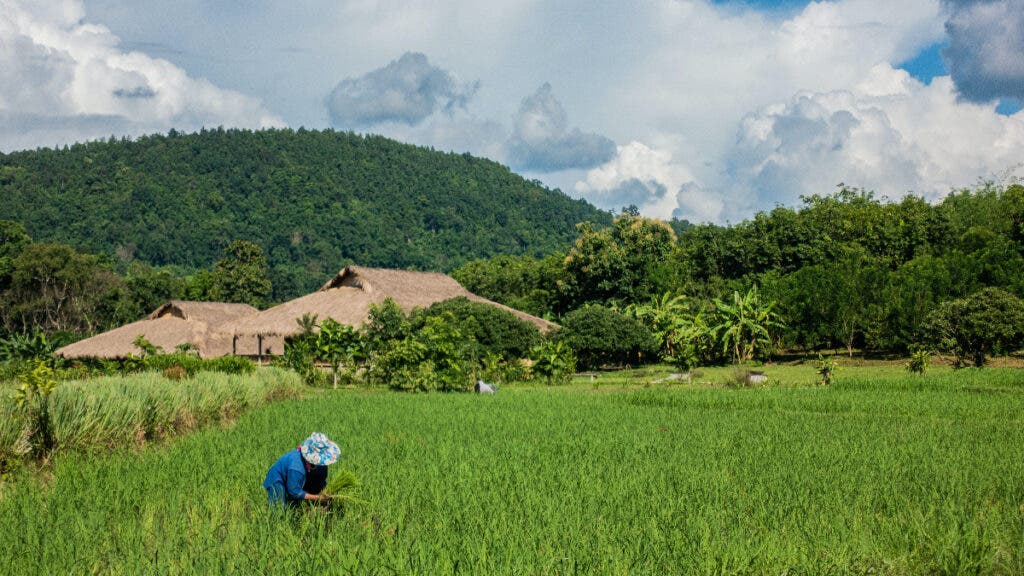To say that rice is important to Southeast Asian countries would be a major understatement. Rice is the single most important staple food in the area, providing around half of the calorie intake of the population. Furthermore, countries in the area are also among the biggest exporters of rice in the world, with Vietnam and Thailand being the second and third largest exporters of rice, respectively (India is the first). Overall, Southeast Asia accounts for 40% of global rice exports.
But there’s a problem. Limited land resources, climate change, and yield stagnation in recent years may affect the region’s ability to remain a large rice exporter — and may even affect its food stability. A new study pinpoints where the biggest yield problems are and how they could be improved.

Southeast Asia is home to some 660 million people, and it’s one of the most vulnerable areas to climate change. Much of the agriculture in the region depends on irrigation systems that will be affected by changes in rainfall and runoff. A 2010 study found that global warming is already reducing yields in many parts of Asia, and the problem will only get worse as temperatures continue to rise. According to the International Rice Research Institute, for every temperature increase of one degree Celsius there’s a 20% reduction in yields in Asia. Southeast Asia is also one of the areas where climate mitigation measures are lagging most. Improving rice yields will be crucial for this region (and for the rest of the world as well) — but there’s a lot of work to be done.
The researchers found that yields in Southeast Asia are only achieving around half of their potential, although there are big differences between countries. For instance, countries like Cambodia, Myanmar, the Philippines, and Thailand have significantly bigger gaps than Indonesia or Vietnam.
“Continuation of current yield trends will not allow Indonesia and Philippines to meet their domestic rice demand,” the researchers write in the study — let alone meeting the demand for exports. “In contrast, closing the exploitable yield gap by half would drastically reduce the need for rice imports.”
There are big yield gaps in Southeast Asia.
A new, greener Green revolution
In terms of what is needed to improve yields, crop management practices (especially nutrient and water management) will likely play a central role, the researchers say. This is particularly the case for rainfed lowland rice, which accounts for nearly one-third of the rice harvest area in Southeast Asia. Uncertainty in rainfall makes farmers reluctant to opt for improved crop management technologies. The team emphasizes that deploying pumps and using a crop insurance system can help these farmers deal with the uncertainty and risk of opting for higher-yield strategies and on average, increase yields. This means that it’s not just farming techniques that have to play a role — but also policy.
“Closing of these gaps requires not only fine tuning of crop management but also the concerted effort of policymakers, researchers and extension services to facilitate farmers’ access to technologies, information, and markets,” the study reads.
Of course, it’s not just about yield. A big challenge is how to increase yields without reducing grain quality. Another challenge is to minimize the negative environmental impact associated with intensive rice production. The trade-offs will have to be managed carefully, but, the team emphasizes, there are important lessons to be learned from the past.
“For example, we know now that knowledge-based site-specific nutrient management can help tailor nutrient management to each environment, helping to increase yield and farmer profits while reducing nutrient losses. Likewise, integrated pest management is a knowledge-intensive but valuable approach if applied correctly and holistically to reduce yield losses to weeds, pests and diseases while minimizing excessive use of pesticides and associated risks to the environment and people.”
Improving the yields in a sustainable way won’t be an easy task, but it’s something that must be done, the researchers conclude — for the sake of the stability of the entire region.
“Regardless of the means to achieve this next and greener ‘Green Revolution’, we note that failure to do it will not only cause political instability but also put additional pressure on land and water resources, thus risking further encroachment into natural ecosystems such as forests and wetlands.”
The study has been published in Nature.






